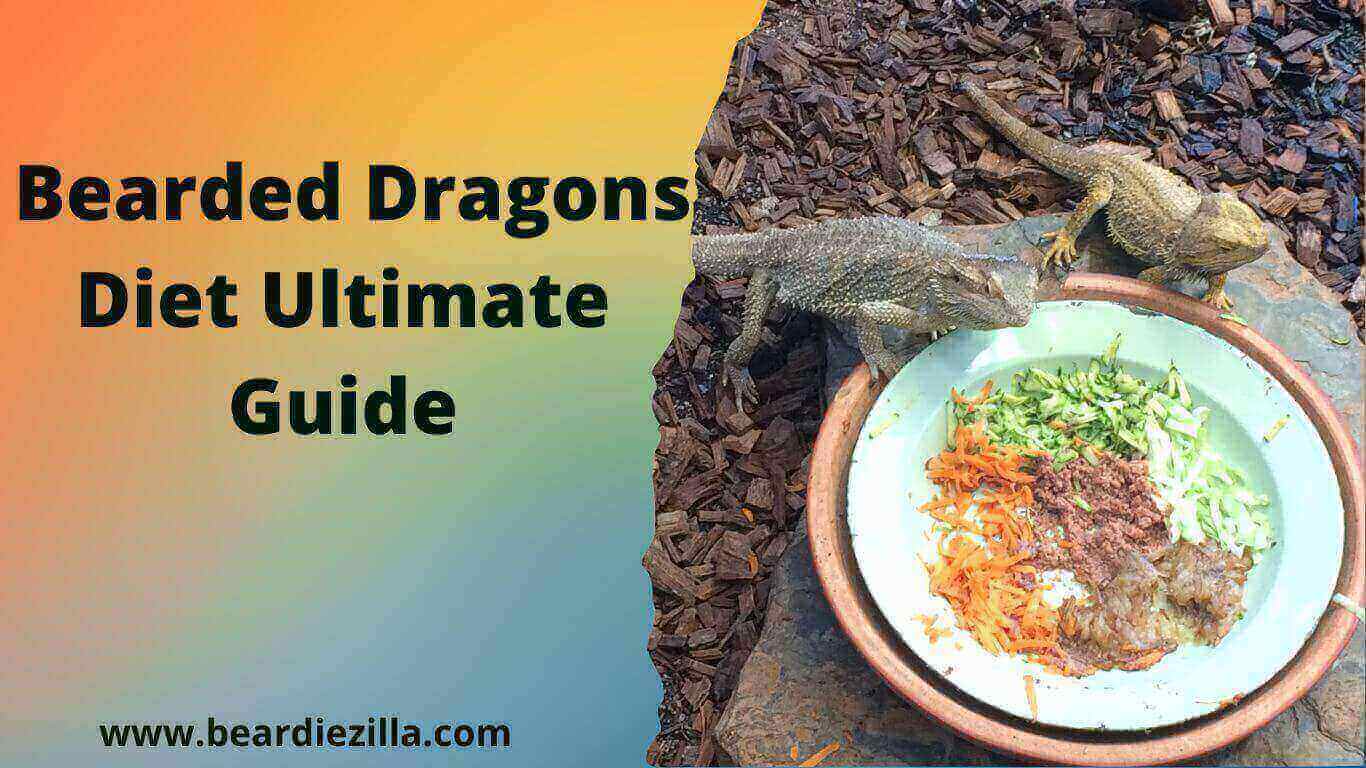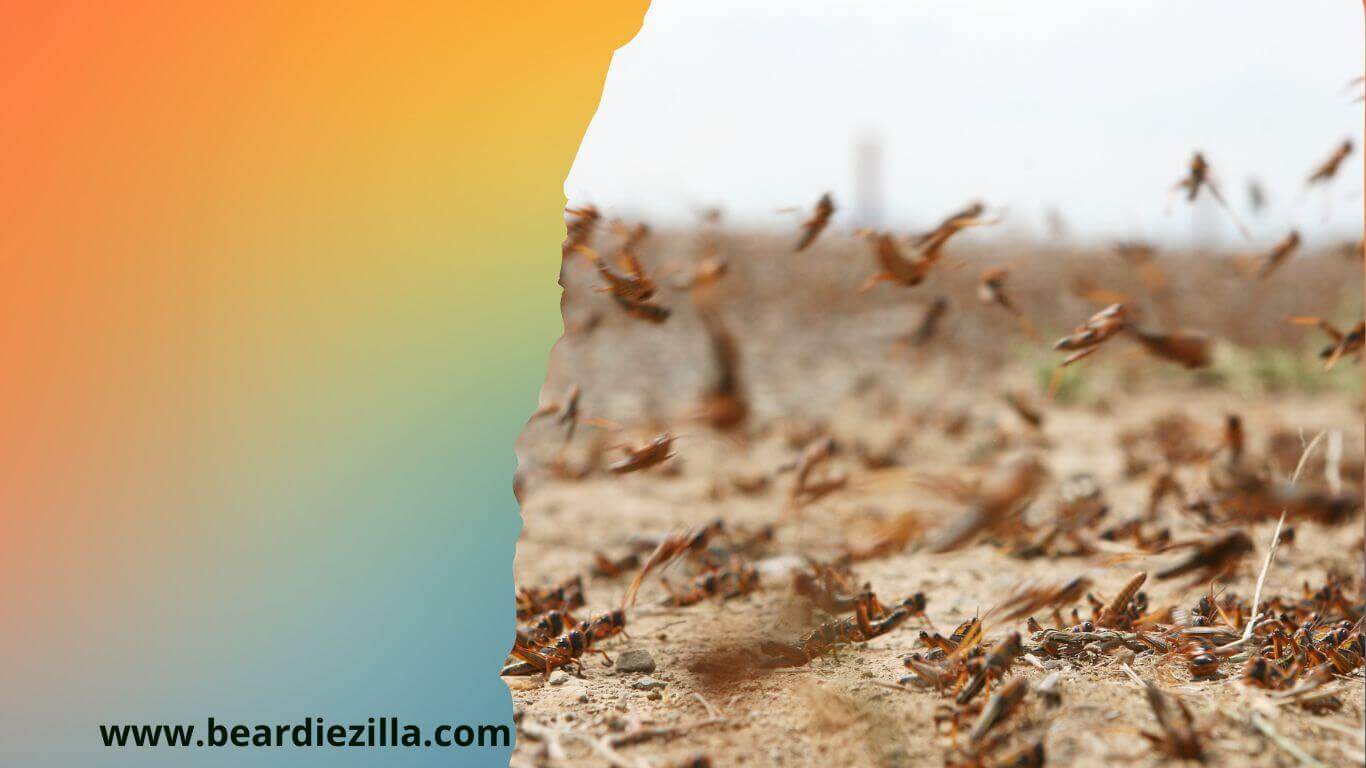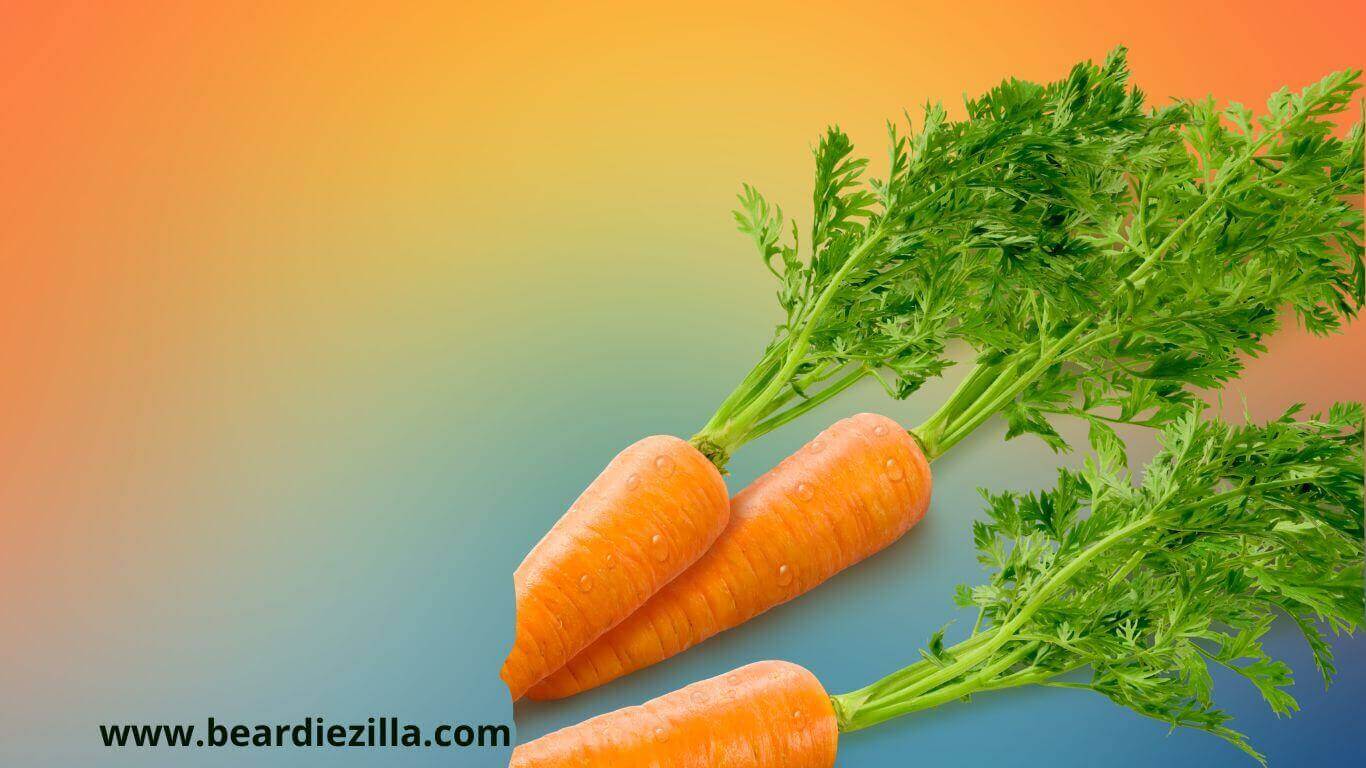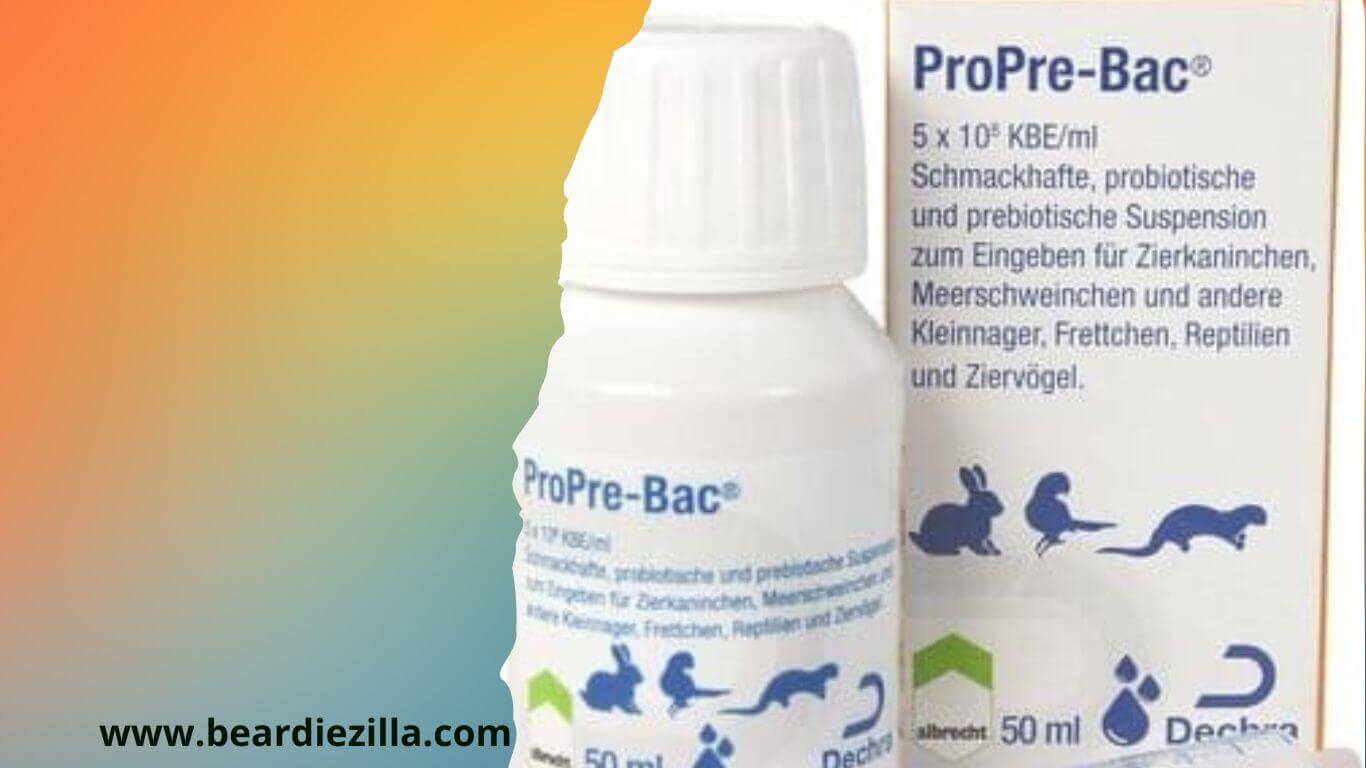
A key issue in husbandry is the bearded dragon diet. To feed bearded dragons, you should consider the natural way of life of these desert lizards.
In their Australian homeland, bearded dragons are ambush hunters. Unlike, for example, a big game animal, which hunts its prey, the bearded dragon waits until the prey is in its vision.
By doing this, the ambush saves them energy. They may later use this for defending themselves from potential predators.
We share in this article some tips on how you can ensure optimal bearded dragon nutrition.
What Do Bearded Dragons Eat In Their Natural Habitat?
In Australia, desert lizards are omnivores. They eat both animal and plant foods.
Thus, bearded dragon food list consists of insects, fruits and vegetables.
Juveniles eat mostly animal food, while adult desert lizards feed primarily on plants.
Bearded Dragons Diet In Captivity
It is a great challenge to make bearded dragons’ diet in captivity as varied as in the wild.
Even so, you should keep the food spectrum as varied as possible. Create a mixture of animal and plant-based food.
Important minerals and additives should not be missing either.
Animal Food

You should feed adult animals 3x adult cockroaches or grasshoppers once a week. On the other days you get green fodder.
As live insects, we recommend keeping and breeding Argentine forest cockroaches (also known as dubia roaches).
Live insects offer the bearded dragon a varied diet. They can follow their instincts and get the nutrients they need.
Note: Dust cockroaches with vitamins
Owners dust the Argentine wood roaches with a vitamin supplement before feeding, so that the animals absorb sufficient vitamins in addition to the nutrients from the live food.
Desert And Migratory Locusts As Live Animals For Bearded Dragons
Bearded dragons also like grasshoppers.
Escaping locusts cannot become a problem in your home because they cannot feed in your living room and therefore cannot reproduce.
In particular, migratory locusts are well suited as food, as they show excellent flight behavior and thus become a popular hunting target.
They are also diurnal and have a high nutritional value.
These Live Animals Should Not Be Fed Regularly
You should refrain from feeding regularly the following food animal to your bearded dragon:
Crickets
They have too little protein and therefore poor nutritional values for bearded dragons.
Mealworms
Mealworms have a far too high fat content and should therefore not be fed regularly to bearded dragons.
Zophobas larvae
These larvae are also too fat and therefore unhealthy for the desert lizards on a regular basis.
Do Mice Belong On The Bearded Dragon’s Food List?
Bearded dragons only eat mice in exceptional cases, for example during pregnancy or in the event of illness, as otherwise there is a risk of fatty liver or kidney gout [1].
If the bearded dragon is in good nutritional condition, there is no need to feed it mice.
Keeping And Breeding Argentine Forest Cockroaches
An advantage of using the Argentine cockroach as food for bearded dragons is that these insects are very easy to keep and breed.
In addition, there is no risk that escaped forest cockroaches can become a nuisance, since they do not reproduce in the house.
They cannot climb smooth surfaces and do not produce unpleasant odors when breeding.
However, the cockroaches need up to 6 months to develop before they are finally fully grown.
The insects reach a stately size of about 5cm long, about 2cm wide and about 5mm thick.
Breeding Approach
First, you need a breeding approach with cockroaches of different gender and sizes. 500 breeding cockroaches cost up to $60. It is important that it is free of mites.
Find A Suitable Container
Simple plastic containers that must be sealed are suitable here. But also make sure there are enough holes in the lid or in the container itself.
Set Up Containers
It must never be too moist in the container so that no mites can settle. Dust-free bedding is best for absorbing moisture. Make sure you clean it regularly.
Feeding
You should use cucumbers, carrots, dry dog food, dry cat food and also oatmeal to feed the forest cockroach.
The Right Temperature
The optimum temperature should be 28 to 32°C in the container. To achieve this, a heating mat is indispensable.
You can check the temperature with an “infrared thermometer gun”, which can be bought in some well-known online shops.
You should plan about 3 to 5 females per male and create a breeding group of at least 50 animals.
In addition, about 100 young animals must be used to achieve continuous breeding.
Cockroach females produce an egg packet about every 2 months, which is laid in a sheltered spot. Until the young animal’s shell has hardened, the mother animal lies down protectively in front of it.
About 30 cockroaches hatch per egg laying. After about 4 to 6 months they can be fed.
It is important to also feed the food animals rich in vitamins so that they contain sufficient nutrients.
Danger
It is best to only feed your bearded dragon live insects until late in the afternoon so that there is enough time for digestion. If possible, you should take out uneaten insects at night, as they can pose a danger to young animals if the cockroaches nibble on them.
Vegetable Food

There is a very wide variety of plants that can be used as food for bearded dragons. These include wild herbs, sprouts or leaves and flowers.
The animals get moisture, fiber and vitamins from the green bearded dragon feed. At least 50% of the bearded dragon food in the terrarium should consist of plants.
Can I only feed the bearded dragon green fodder?
Some keepers have tried to feed the desert lizards exclusively with plants.
However, this led to a significantly shorter life expectancy and is therefore not recommended.
The Green Food List For Bearded Dragons
Below you will find a list of green fodder that you can always and permanently feed (always wash well beforehand):
- endive
- rocket
- carrot green
- radicchio
- Golliwoog (can also be bought online)
- radish green
- Pumpkin Blossom
- Lollo Bionda
- Lollo rosso
- Romaine lettuce hearts (a lot of calcium)
- zucchini flower
- chicory
- Leaf chicory (Catalogna, giant dandelion is rich in vitamins and calcium)
Caution: Green fodder for bearded dragons must be varied
Even if seasonally, for example in winter, only one or a few wild herbs are available, you should always make sure that the bearded dragon green food list is varied.
It is not healthy for the animals if they are only fed one type of plant over a longer period of time.
Where Can I Find Forage Plants In Nature?
Ideally, you should always buy fresh forage from a dedicated organic market to reduce the risk of pests infesting the plants.
But there is nothing wrong with collecting suitable wild plants, flowers and herbs in nature.
It is important that you are sufficiently knowledgeable and collect the right plants.
When picking the plants, always observe the nature and species protection regulations.
Never pick forage near a road or field. There is a great danger here that these plants are contaminated with environmental toxins or pesticides.
Ideally, you grow wild herbs and forage for bearded dragons in your own garden.
In any case, all plants must be rinsed with water again before feeding – regardless of where they come from.
Fruits And Vegetables: Why You Shouldn’t Feed Your Bearded Dragon Regularly
Bearded dragons like to eat fruit and vegetables. Nevertheless, they are not part of a healthy and species-appropriate bearded dragon diet.
The reason for this lies in the high proportion of glucose contained in fruit and vegetables.
The stomach of the animals cannot process this and an infection or a parasite infestation can develop very easily.
In addition, fruit also has a very unfavorable ratio of calcium to phosphorus [2].
A Sample Feeding Schedule For Your Adult Bearded Dragon

As a guide, we share with you a sample feeding plan, which you can of course vary according to your needs.
- Monday: Green fodder with wild herbs and flowers
- Tuesday: fasting day
- Argentine locusts
- Thursday: Mixed green fodder
- Friday: Green fodder with wild herbs and blossoms
- Saturday: fasting day
- Sunday: Kitchen herbs, sprouts and sprouts / dry mix
Feeding Schedule For Young Bearded Dragons
It is important to adapt especially the live feedings to the bearded dragon’s age. Accordingly, young animals need live food more frequently than adults. With the exception of fasting days, green fodder should be offered daily.
Up to 3 Months Of Age
Young animals up to the 3rd month get 3 food animals 3 times a day. The feedings should be distributed throughout the day, i.e. one animal in the morning, at noon and in the evening.
Grasshoppers and Argentinian forest cockroaches are also best suited here, because crickets have poor nutritional values.
The feeding is then dusted with vitamin powder and calcium. For young animals, the Nekton Rep and Nekton MSA mixed together are best for this.
3rd to 6th Month Of Life
From 3 to 6 months you only feed 3 prey animals twice a day, whereby one feeding is pollinated and distributed throughout the day.
From the 6th Month Of Life
At 6 months of life of the beardies, reduce the feeding schedule. The animals now only get food once a day in the form of 3 feed animals, of which 1 to 2 are then dusted with the vitamin preparation. There is also one live food-free day per week.
From the 7th Month Of Life
In the 7th month of life, continue to feed 3 prey animals once a day. However, you now plan 2 live food-free days per week.
From the 8th Month Of Life
In the 8th month of life, the 3 food animals per day remain, but now the number of days without live food increases to 3 per week.
From the 9th Month Of Life
At this age, the number of live feed-free days increases to 4 per week. It remains with the 3 feed animals per day.
From the 10th Month Of Life
When the bearded dragon has reached the 10th month of life, it only gets 1×3 food animals on 2 days a week.
From the 12th Month Of Life
From this point on, the animals only get 1 x 3 food animals per week.
Green fodder is given daily from the first day of life. Wild herbs and edible flowers work best. Cut everything nice and small.
What the animals are allowed to eat can be found in our feed list.
If you only feed live a few times a week, please pollinate the green fodder from time to time.
Note On The Relationship Between Green And Live Fodder
For young bearded dragons, the ratio is 70% live and 30% green fodder.
Adult bearded dragons should be fed about 20% live and 80% green fodder.
Never Feed Your Bearded Dragon Dog Or Cat Food
Owners keep coming up with the idea of offering their bearded dragon dog or cat food.
You should definitely avoid this. These types of food are absolutely unsuitable for desert lizards.
This Will Tell You If Your Bearded Dragon Is Over- or Underfed
Is my bearded dragon too fat or too thin? You can recognize a healthy animal by its alert eyes and agility when you buy it.
A sign of malnutrition is always when the bones in the pelvic area protrude.
But, if the animal is overfed, the beard will drop slightly. Also, the body appears very broad.
The beardie can moves very poorly and the tail behind the pelvis is very thick.
How To Stimulate The Appetite Of a Bearded Dragon That Eat Little

If the lizard is eating sparingly (eg after being transported or moving to a new home) then you can stimulate the appetite with a probiotic medication called ProPre-Bac.
In the following we would like to go into more detail about how the remedy works and why it promotes food intake.
ProPre Bac To Support Food Intake
The probiotic drug supports the gastrointestinal flora and also has an antibacterial effect. Especially when the animal is sick or suffering from a parasite infestation, ProPre Bac stimulates the animal’s appetite. The drug also has a supportive effect during treatment with Panacur and Bycox.
Because ProPre-Bac is made with added honey, the animals really like it. Most of the time, after you put a small drop on the nose, the bearded dragon will get very keen on it. You can get the appetizing remedy from a veterinarian who knows about reptiles as well as in relevant web shops.
All information about dosage & administration
- Administration: 1 – 2 x daily or 5 days at a time as a cure during a parasite infestation
- Dosage: 0.1 ml per 100 grams of animal weight.
- Shelf life: 2 months after opening
- Always rinse the syringe thoroughly after use
Treatment should always be discussed with your veterinarian. You can also give ProPre Bac after the hibernation to stimulate the bearded dragon’s appetite. It is also ideal as a dessert in between meals.
Important Shelf Life Information
Once opened, the bottle can be kept for another 2 months and does not need to be kept in the refrigerator. Always rinse the dosing syringe thoroughly after use, otherwise it will clog. You can also freeze the medication and set it out to thaw the night before. This extends the shelf life to 6 months or longer.
Tip : To freeze, draw the entire contents into syringes to match the dose and place in a bag in the freezer.
Commercial Feed Mixtures From The Trade
Ready mixes for desert lizards are also available at pet stores. They mostly contain dried plants and can be used as a supplement to the bearded dragon food list, but not as a full food.
In addition to dried food, your desert lizard also needs fresh green fodder. If you offer the food mixture to bridge the holiday season for a limited period of time, the desert lizard can handle it well.
Dietary Supplement With Vitamins, Korvimin And Cuttlebone
Even a varied and balanced diet does not replace the fact that you have to give additional vitamins and minerals. Keeping them in terrariums means that bearded dragons cannot absorb these important food additives by themselves.
Why is getting vitamins and minerals so important?
In particular when rearing bearded dragons, a lack of vitamins and minerals can result in diseases and deformities. Trembling convulsions and paralysis are also the result of a vitamin deficiency, which can lead to the death of the animals. But too much vitamins can also have similar consequences. It is all the more important to ensure a balance here.
Which vitamin supplements are recommended?
A good supply of vitamins can be achieved with the Nekton-Rep-Calcium + D3 and Nekton-MSA. Mix the products 1:1.
Herptal Complete T is a combination preparation that was specially developed for reptiles. But be careful: it can easily be overdosed.
What additional vitamins and minerals do bearded dragons need?
corvimin
Korvimin is a vitamin-mineral preparation that provides the bearded dragon with sufficient important additives. You can obtain Korvimin preparations from your veterinarian, for example, or buy Korvimin from pet shops.
To administer the powder, it is advisable to dust the food insects with it before they are placed in the terrarium. Put the powder in a small, tall container and then add the wood cockroach. Now shake the jar a little until the insect is completely encased in the powder.
Caution: Do not sprinkle green fodder with vitamin powder
In contrast to the whale cockroaches, you should never sprinkle the green fodder with a vitamin powder. There are several reasons for this. On the one hand, you cannot estimate the dosage and, if you have several animals, you do not know which animal consumed how much.
On the other hand, the ingredients of the preparations spoil very easily due to the moisture. However, it is possible, for example, to sprinkle individual flowers with a vitamin preparation and then to administer this to the animal with a pipette.
Cuttlebone / Calcium

Cuttlebones should always be present in the terrarium and always accessible to the animals. The bearded dragons thus cover their calcium requirements and fill up their calcium balance.
The bearded dragon should be able to use these bowls as needed. If a lack of calcium occurs, the desert lizards often start to eat the substrate.
Not only is this highly unhealthy, it can also lead to constipation. A further administration of vitamin-mineral preparations via the feed is not necessary.
Note : Make sure to chop the cuttlebone into small, round pieces with a knife to protect the animals’ stomachs and to provide the necessary vitamin C supply.
If no sepia is offered in combination with a small amount of powdering of the insects with Nekton MSA, you risk developing rickets.
It is not necessary to offer the animals additional multivitamin preparations, this would be rather harmful for the animals.
FAQ on Feeding Bearded Dragons
In the following we have summarized important information for feeding the bearded dragons and answers the most frequently asked questions.
Feeding Bearded Dragons: How Often Do They Need Food?
We recommend that you offer your desert lizards something to eat 5 days a week until they are 6 months old. You should fast for two days. As a result, the bearded dragon can better digest any leftover food and are not as easily embarrassed about becoming too fat.
How much can bearded dragons eat in the terrarium?
Many owners observe that bearded dragons are very greedy when it comes to feeding. It is all the more difficult to correctly estimate the amount of food required, as one gets the feeling that the desert lizard is always hungry. In the wild, bearded dragons always eat as much as they can get because they never know when food will next be available.
In the terrarium, on the other hand, they sometimes eat so much at once that they throw up while they are still eating. It is all the more difficult to give a general indication of the amount of food bearded dragons consume.
We recommend that you set up about one or two fasting days a week and regularly check the animals’ weight. If they appear too fat by eye, adjust the amount of food if necessary.
What should I do if my bearded dragon refuses to eat greens?
If bearded dragons were not offered green fodder as young animals, then in most cases they will not accept it as adult animals either. However, you should definitely stick with those who refuse and keep offering them green fodder.
A little trick is to stop the intake of live food and have fresh green fodder in a feeding bowl in the terrarium every day. During the days the lizard will also bite due to hunger.
Why does my bearded dragon sometimes eat a lot and sometimes little?
It can be observed again and again that the desert lizards eat the entire amount of food immediately on some days and nibble on it at most a little bit on other days. However, if the animal otherwise behaves normally and shows no signs of illness, then this behavior can be considered completely normal.
What should I do if my bearded dragon only eats a certain type of food?
Some owners complain that their animals only touch a certain type of feed. You should not tolerate this, as otherwise the unbalanced diet can lead to serious damage to your health.
If the bearded dragon refuses other types of food, then you should only offer the lizard this food occasionally and in very small quantities and instead the more varied diet. Even a few days of zero diet can help to get the animal back on the right path in terms of nutrition.
Resources
[1] Clinical Management of Reptile Renal Disease
https://pubmed.ncbi.nlm.nih.gov/31759445/
[2] Pet Reptiles Need Vitamin D and Calcium for Bone Health
https://aces.illinois.edu/news/pet-reptiles-need-vitamin-d-and-calcium-bone-health
